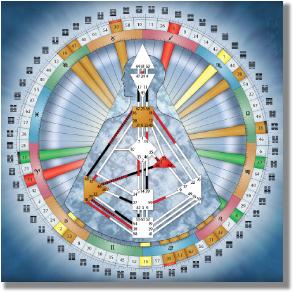 |
|
I Ching & The Human Body
Class Four: Assimilation
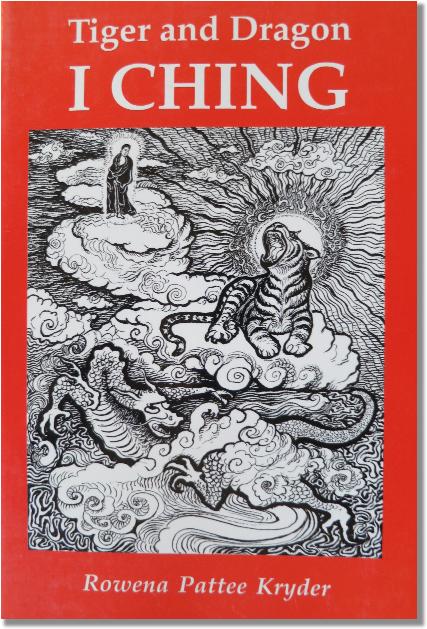
 Class Four: Assimilation Please study this page with Audio Lecture Two.
Class Four: Assimilation Please study this page with Audio Lecture Two.
Leaning the I Ching is more than leaning the hexagrams alone, we are learning a sensibility, basic principles of understanding and behavior that apply to all aspects of life and are gradually shaping our character.
. . .
The sixty-four hexagrams represent an adequate symbolic sample of all the experiences of relative or linear time – i.e., change. Each time we have an “ah ha!” experience - a moment of experiential insight into the meaning of a given hexagram - we've not only have a moment of awake, we also “programing” ourselves – influencing our consciousness through the imprint of the ah ha – to become more aligned with reality and with genuine growth or evolution of consciousness.
. . .
We are learning to see the hexagrams free of judgment and thus become capable of accepting all situations, in fact loving them. To the degree we approach life through hope and fear is the degree we feel a given hexagram is “good” of “bad.” With experience on the path of acceptance or surrender, we feel joy simply in recognizing the nature or truth of a given situation.
. . .
Under the heading of There are hexagrams everywhere if we see them:
As long as the intention and intuition of the questioner is clear, various methods of using the oracle can be effectively. Even recognition of hexagrams in the landscape, marks on trees, patterns of cars on the street or expressions on faces are valid. It depends on the knowledge of the questioner. (Tiger & Dragon I Ching, pg. 13.)
Once one is familiar with patterns, the hexagrams can be seen as energy-currents, beginning from the bottom line and working upward. Consequently, they can be recognized in sequences of events, the landscape and wave patterns, weaving, etc. Even types of leaves and trees, of species and thought forms are applicable. (Tiger & Dragon I Ching, pg. 20.)
Another View of the Hexagram's Upper and Lower trigrams:
 The inner or lower trigram as embodied within you (earth) and the outer or upper trigram extends from you as aspiration (heaven). Some hexagrams show largely correct embodiment and aspiration (#24); other show more problematic expressions (#44).
The inner or lower trigram as embodied within you (earth) and the outer or upper trigram extends from you as aspiration (heaven). Some hexagrams show largely correct embodiment and aspiration (#24); other show more problematic expressions (#44).
Another look at the Hexagram as Physiology and DNA :
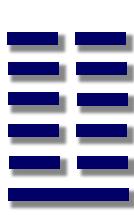
#24 FU. Return [The Turning Point]
Return – Return of consciousness of reality; activity obeying the mind. Returning. Something re-emerging; go back to this starting point in order to begin anew. Return: go back, turn back to the starting point; recur, reappear, come again; restore, recover, retrace; an earlier time or place. Ideogram: step and retrace a path.
Human Design: Gate of Rationalization. [Channel of Awareness. Individual Circuit]
Gene Keys: Physiology: Neocortex
Shadow: Addiction. [Repressive nature: Frozen; Reactive Nature: Anxious.]
Gift: Invention. Siddhi: Silence.
The shadow of addiction fundamentally refers to habitual and closed patterns of thought, which trap us in painful conceptual states of mind that keep us unconsciously afraid of change, of leaving our seeming comfort zone. The key to embracing the shadow is to recognize the "gaps" that occur in our thought stream. It is within the gaps that the gift of invention occurs, which is insight into possibilities beyond addiction - in the language of the Gene Keys it is a moment of evolutionary mutation in which new and more apt ways of thinking occur. The siddhi of silence is, of course, beyond any level of thought as conceptual mind.
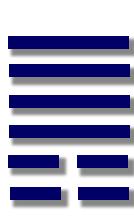
#33 TUN. Retreat
Withdrawal – Storing positive energy, subduing energy, exercising strength with restraint, not using power arbitrarily. Retiring. Conflict and subsequent seclusion; withdrawing from the affair at hand and conceal yourself in obscurity. Retire: withdraw; fun away, flee; conceal yourself, become obscure, invisible, secluded, non-social. Ideogram: walk and swine (wealth and luck), satisfaction through walking away.
Human Design: Gate of Privacy. [Channel of The Prodigal. Sensing Circuit]
Gene Keys: Physiology: Throat / Thyroid
Shadow: Forgetting. [Repressive nature: Reserved; Reactive Nature: Censorious.]
Gift: Mindfulness. Siddhi: Revelation.
The shadow of forgetting is founded upon the doctrine of samskaras, the karmic traces of our actions which become stored as memory. Driven by desire, we form samskaras which in turn cause us to seek more experience. This shadow is the process of forgetting our fundamental nature or self. By nakedly experiencing the samskaras as they arise we begin to remember who we actually are. This is mindfulness, with its key component of being able to witness ourselves. Within mindfulness the clarity of vipassana or innate, self-existing awareness naturally arises.

I Ching & The Human Body
An On-line Class with Bill Scheffel
Introduction & To Register
Class One: The Trigrams
Class Two: The Hexagram
Class Three: The Hexagram II
Class Four: Assimilation
Class Five: Early Heaven...
Class Six: Acquired Conditioning..
Class Seven: Standing Under...
See more classes...
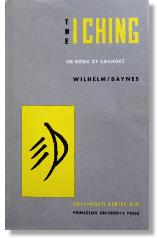
INTUITIVE DIALOGUES & I CHING READINGS with Bill Scheffel
The I Ching is a teacher to me, a revered guide, even a "hobby" - something I simply love to study, consult and share with others. I first opened the I Ching in 1970, when still in high school, intrigued and mystified by what it had to say. I began to actively engage with the I Ching in 1990, soon after I met Howard Bad Hand, an indispensable teacher who opened the book for me, removed the mystification and made it practical. in 2001, I began consulting the I Ching every morning, a practice that became a way of life.
I offer I Ching-intuitive readings for people in person, over the phone or through Skype. A reading begins with an initial conversation in which I listen to the issues in your life that form the basis of your question. From there, you "throw the coins" and I study the outcome in preparation for the full reading, typically done the following day. I help bring the symbolic images of the I Ching into the fabric of your question and life. Though the council I provide is founded on my experience with the I Ching, and intuitive guidance - the psychic or intangible dimension of life - it is very much a mutual conversation, a container we create together for insight to occur.
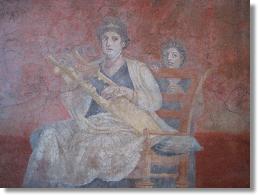
What is the I Ching?
The I Ching is perhaps humanity's oldest book, with roots preceding the Chinese Xia Dynasty of 2200 - 1800 BCE. The I Ching consists of sixty-four hexagrams, symbolic images that mirror the various life-situations we find ourselves in, and offer guidance for making correct decisions.
Traditionally called an oracle, the I Ching is a way of opening our life-questions to a larger system. Jung called this system synchronicity, “the peculiar interdependence” between ourselves and the events around us." This is also the world of the unconscious, of dreams, of contemplation. It is the world of spirit, the world of the dralas. This larger world is potentially always available to us, ready to support our highest aspirations.
The I Ching is way of consulting this larger world, and our own heart, the very center of the crossroads of life decisions. Our heart, as a spiritual force, is "outside of time" - i.e., beyond our usual occupations of hope and fear. In consulting the I Ching we "receive" a given hexagram through a random method - typically tossing coins. In such a method we have no control over the outcome, only the courage to inquire. In this matrix of sincerity and surrender, synchronicity can speak and spirit can enter, voices that can resonate with the truth of our own heart, the ultimate place of guidance.

I Ching, the "Book of Change" is considered the oldest of the Chinese classics, and has throughout its history commanded unsurpassed prestige and popularity. It has been considered a book of fundamental principles by philosophers, politicians, mystics, alchemists, yogins, diviners, sorcerers, and more recently, scientists and mathematicians... Continuing interest in the I Ching is enhanced by the fact that it has never been universally regarded as the sole property of any particular religion, cult or school of thought. - Introduction to The Taoist I Ching, translated by Thomas Cleary.
